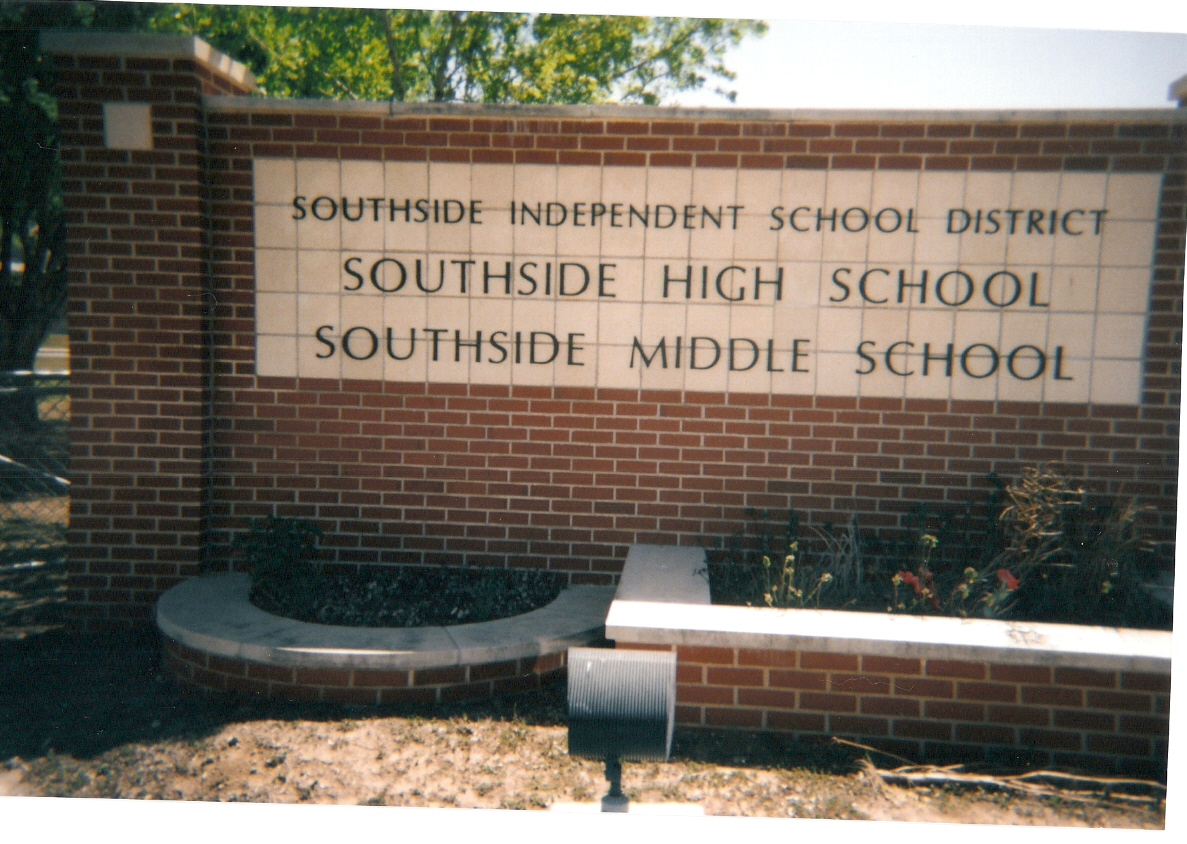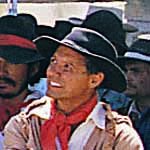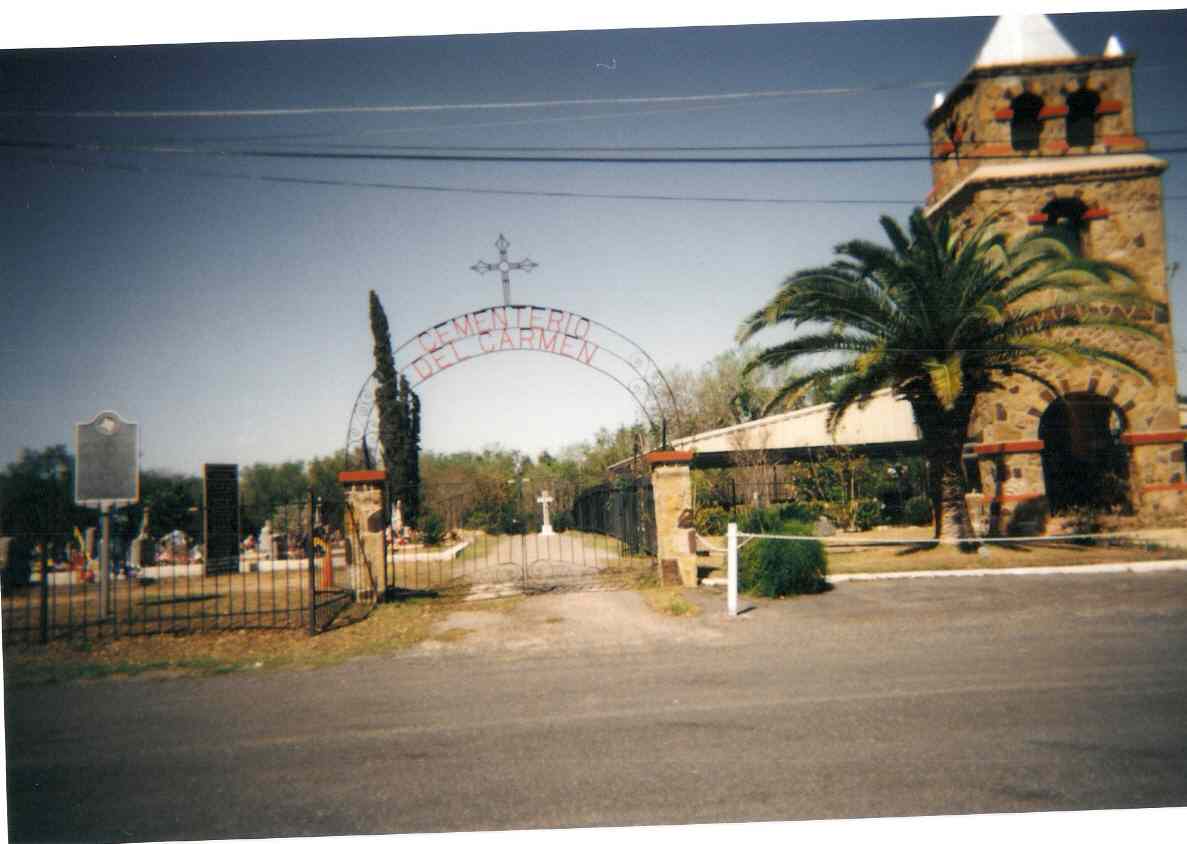

| Maria Estrada, Veronica Rodriguez | Spring, 2006 |
| U.S. History 1302 | R. Hines, Instructor |
"FOUNDING FATHERS AND MOTHERS": The community was probably first settled after the Civil War. The community was known in its early years as Lecomteville after Leon Lecomte, who served as first postmaster, but the name Losoya was adopted when the post office was granted in the late 1870s. The new name may have been a corruption of Laysawyer, the name of a local family.
ECONOMY: The economy in Losoya is not too good, many of the residents choose to leave Losoya and head to the city where there are more opportunities and jobs. And some of them stay in Losoya but they go to work in another town. Some landowners had founded gold in their properties. Losoya has a few grocery stores, and also has a Ladies of Charity Store. This store has things that people had donated and they sell it in order to get money to buy food for the poor people. Losoya also has a local gas station.
EDUCATION: The area where Losoya Intermediate is located is known as
"Losoya"--named for the original landowners of the area-named Losoya.
The street is named Martinez-Losoya Road after original
landowners-in the same area- named "Martinez".
Losoya Intermediate School was opened in the fall of 1987.
Many people believe that the school was named for or because of the
name of the area, but that is not true. Losoya Intermediate was
named for Toribio, Losoya,
an Alamo defender--no connection or
relation to the original "Losoya" landowners. The move to name our
school for this Alamo defender was spearheaded by several faculty
members of another elementary school.
There is currently a statue of Toribio Losoya located across the
street from the Hyatt Hotel on Losoya Street in downtown San Antonio.
The Losoya building was the original Southside High School opened in
1949. Since the school at that time only offered grades up to 9th
grade, students were bused to Harlandale
High School for their 10th and 11th grade. Southside High School was able to
provide the upper grades a year later and so the first graduation
ceremony was held for the 1950-1951 graduating seniors. The building
was transferred to a Junior High/Middle School around 1967 or 1968 or
so. That is when the "new" high school was opened which is the
current Southside middle school.
RELIGION: Almost 90 percent of the community of Losoya is Catholic. Losoya has the parish of Our Lady of Mount Carmel, which has one of the most ancient and noble histories of all the parishes of the Archdiocese of San Antonio, surpassed perhaps only by those of the Cathedral and Missions. The people of Losoya expended over the past 290 some years their time, talent, and resources in making Our Lady of Mount Carmel the outstanding community of South Bexar County that it has become and continues to develop into.
The original mission chapel of Nuestra Senora del Carmen / Our Lady of Mount Carmel,was the direct outgrowth of one of the early battles for Texas independence. It was on August 18, 1813, not far from the present church, that the Loyalists of Mexico and the Republican Army of the North met in the decisive Battle of Medina in which more than 125 persons lost their lives. No attempt was made even to bury the dead until 1817 when the chapel and crypt of Nuestra Senora del Carmen de Medina was erected as a memorial to the heroes of the battle.
By 1854 a rectory was added and the chapel enlarged into a church, which was dedicated on January 24, 1855 in honor of Our Lady of Mt. Carmel. Father F. Bouchu was resident priest at the time. He remained until 1872 when Father Emilio Chapolard succeeded him.
Fire almost completely destroyed the church in 1872, but by 1877 it was restored and moved directly over the original crypt.
A Jesuit priest, Fr. Tomas Mas, took up residence at El Carmen in September 1874. At that time, the church was the center of a little town called La Villa del Carmen, where cattle drivers halted for the night before the final drive to the railhead in San Antonio. For a short period in 1897, El Carmen was a mission of Las Gallinas but was restored to parish status the following year.
The church was again damaged by fire in 1904, but was once more restored. In the same year the parish was made a mission of San Fernando Cathedral. Eleven year later it was attached to Immaculate Heart of Mary Parish in San Antonio. For 40 years, Our Lady of Mt. Carmel was served by the Claretian Fathers from these two churches.
HISTORICAL LANDMARKS: El Carmen Cemetery
Numerous 19th-century journals and other written historical accounts trace the origin of this cemetery to the burial of causalities of the battle of Medina. Fought on August 18, 1913 the battle was the result of a failed attempt by a Republican Army of the North, consisting of about 1200 to 1500 Mexicans, Anglo Americans, and Indians, to free Mexico from Royalist Spanish Rule, the Royalist Army was victorious, and hundreds of men who died on the battlefield later were interred at this site between 1813 and 1817, The Church of Nuestra Senora del Carmen traces its origin to a chapel built over the soldiers burial crypt.
The burial site became a community cemetery as pioneer settlers established homes in this area. Among those interred in the graveyard are the families of Domingo Losoya and Dionicio Martinez, who received Mexican land grants surrounding the cemetery property. Also buried here are Enrique Esparza who as a child survived the battle of the Alamo, and French Immigrant Gustave Toudouze, a prominent local naturalist and businessman. A cemetery association formed in 1927 maintains the Hispanic site, which continues in use as a cemetery for the local community.
UNUSUAL EVENTS?: Enrique Esparza (September 1824- December 20, 1917) Son of Alamo Defender Gregorio Esparza, 11 year-old Enrique, his mother, two brothers and sister were present at the siege by the Mexican Army (February 23- March 6, 1836). Hidden in a pile of hay, the youth saw his father fall and witnessed the heroic death of James Bowie on his sick bed; he then watched the bodies of the Texans burn in two huge pyres. Enrique Esparza’s eyewitness story later became invaluable, for he was one of few survivors.
Interview with Santiago Valdez
ANNOTATED BIBLIOGRAPHY:
Santiago "Jimmy" Valdez, Our Lady Of Mt.Carmel Cemetery Superintendent.
He give us an interview.
Anna Bustamante, Losoya Intermediate School Teacher.
She gave us information about the schools in Losoya.
Information about Toribio Losoya. Information about the Battle of Medina
History of the Scapular of Our Lady of Mt. Carmel.
Small Town Research Projects Index



 In 1994, at the urgent request to the people of the district, Archbishop Robert Lucey assigned the care of El Carmen to the Vincentian priests at St. John’s Seminary, who provided regular Sunday Mass.
In 1947 El Carmen was attached as a mission to St. Leo’s Parish and continued in that status until it was established as a parish again in 1959. Three years before that, when St. Leo’s Parish was entrusted to the Vincentian Fathers, Father Raymond F. O’Brien, C.M., took up residence at El Carmen. After a lapse of 50 years, daily Mass and presentation of the Blessed Sacrament became a reality gain.
The Ladies of Charity came to El Carmen in 1958 to do catechetical work and, later, to staff a maternity and medical clinic, erected in 1964.
On December 17, 1967 the new church of Our Lady of Mt. Carmel was dedicated to replace the old structure, which had become weakened through the years. Today the bell tower of the historic building stands as a remainder of the dedication of past generations.
Our Lady of Mt. Carmel Parish extends over an area of approximately 50 square miles. The church is located about six miles south of Loop 410, off Hwy. 281 South. There are over 750 families in the parish.
The parish plant includes the church, rectory, convent, cemetery, parish hall, activity center, computer lab and three religious education buildings.
June 1, 2002 Fr. Carl Maurer was assigned as pastor/administrator of Nuestra Senora del Carmen / Our Lady of Mt. Carmel. (Our Lady of Mt. Carmel Catholic Church Book, pg.1,3,4)
In 1994, at the urgent request to the people of the district, Archbishop Robert Lucey assigned the care of El Carmen to the Vincentian priests at St. John’s Seminary, who provided regular Sunday Mass.
In 1947 El Carmen was attached as a mission to St. Leo’s Parish and continued in that status until it was established as a parish again in 1959. Three years before that, when St. Leo’s Parish was entrusted to the Vincentian Fathers, Father Raymond F. O’Brien, C.M., took up residence at El Carmen. After a lapse of 50 years, daily Mass and presentation of the Blessed Sacrament became a reality gain.
The Ladies of Charity came to El Carmen in 1958 to do catechetical work and, later, to staff a maternity and medical clinic, erected in 1964.
On December 17, 1967 the new church of Our Lady of Mt. Carmel was dedicated to replace the old structure, which had become weakened through the years. Today the bell tower of the historic building stands as a remainder of the dedication of past generations.
Our Lady of Mt. Carmel Parish extends over an area of approximately 50 square miles. The church is located about six miles south of Loop 410, off Hwy. 281 South. There are over 750 families in the parish.
The parish plant includes the church, rectory, convent, cemetery, parish hall, activity center, computer lab and three religious education buildings.
June 1, 2002 Fr. Carl Maurer was assigned as pastor/administrator of Nuestra Senora del Carmen / Our Lady of Mt. Carmel. (Our Lady of Mt. Carmel Catholic Church Book, pg.1,3,4)





